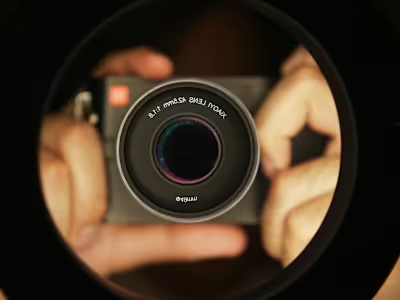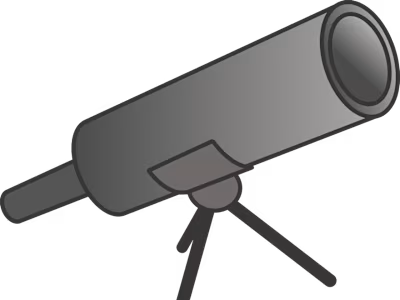Pond Filter Buyer's Guide
If you own or intend to create a pond or water feature as part of your landscaping, you need a pond filter. A pond filter keeps the water clear and maintains the health of the pond or water feature and any fish or plants it contains. This buyer's guide explains how to determine the correct size and type of filter for your pond or water feature.
Pond Filter Buyer's Guide
When you buy a pond filter, there are three things you need to know to choose the best filter
for your pond, water feature, or pond and water feature:
How much water your pond, water feature, or pond and water feature contain
How many fish your pond contains
What type of filter will work best for you and your pond or water feature
The amount of water and the number of fish determine the size filter you need. The type of
filter you choose depends on whether you prefer to hide the filter within the pond or have it on land, and whether you prefer to have the water enter the filter before or after it passes through the pump. Your choice of filter will also depend on whether or not you have a waterfall or fountain cascading into your pond.
Determining the Correct Size
Your pond pump and filter must run 24 hours a day. Consequently, at one time, a pump that filtered water once every two hours was acceptable. Since that time, however, pumps have
become more energy efficient, reducing energy costs. Now, the new standard recommends a pump and filter that circulates water once every hour. Filtering the water once every hour results in healthier pond environments for you, your family and guests, and your fish and pond plants.
For Ponds With No Water Features or Fish
To determine the amount of water contained by a square or rectangular pool that is all one depth and that contains no water features or fish, you simply use this easy formula:
Length x Width X Depth X 7.5 = Gallons of Water
For a round or oval pond that is all one depth and contains no water features or fish, measure the diameter of the pond, divide the diameter by two to find the radius of the pond, and then use this formula:
3.14 x Radius x Radius x Depth x 7.5 = Gallons of Water
For a pond that contains no water features or fish but that has two or more depths, measure the depth of the pond at different levels. To find the average depth of the pond, add the measurements together, and divide by the number of times you measured the depth of the pond. Use the average depth to determine the gallons of water contained in your pond.
For a pond with an irregular shape with no water features or fish, find the average width by
measuring the width of the pond at various points, add the measurements together, and divide the measurements by the number of times you measured the pond's width. Use the average width to find the gallons of water contained in your pond.
If your pond has multiple depths and an irregular shape but has no water features or fish, combine the method for ponds with two or more depths and the method for ponds with average shapes to find the average depth and average width and use those figures to determine the gallons of water contained in your pond.
If your pond measures 5 feet x 5 feet x 1.5 feet then it holds 281.25 gallons of water. You will need a pump and filter that will circulate 281.25 gallons of water per hour. The pump should have a chart that lists how many gallons of water it circulates per hour.
For a Pond With a Water Feature
If you have a waterfall or fountain, you need to know how many feet of tubing you have
between the pump and the waterfall or fountain; the number of 90° bends, ball valves, gate valves, and other adapters, reducers, and special fittings used with the tubing; how high your waterfall is; and how wide your waterfall is.
You need this information to calculate the flow rate of your water feature and the total dynamic head pressure -- the amount of pressure the pump needs to overcome in order to deliver the required flow rate for the water to the top, or "head height", of your waterfall or fountain.
The width of your fountain or waterfall determines the flow rate.
Your waterfall or fountain pump should move 125 gallons of water per hour for each inch of width for an average waterfall or fountain. For a gentler flow, use 100 gallons of water per hour or less for each inch of width. For the look of rapids, use 150 gallons of water per hour or more for each inch of width. To calculate the flow rate, use this formula:
Inches of Width X Gallons of Water Moved Per Hour = Flow Rate
Estimate the total dynamic head pressure with this formula:
H = Height (in feet) from the top of the water level in the pond to the top of the waterfall
or fountain.
T = Total distance of tubing (in feet) from the pump to the waterfall or fountain.
A = Number of 90° angle bends and reducers used with the tubing.
B = Number of ball valves, bulkheads, and other miscellaneous adapters used with the tubing.
H + (T/10) + (A/2) + (B/4) = Estimated Head Pressure
So, for example, if you have a waterfall with a width, or headway, of 15 inches and a height of 18 inches, and you want the sound of a gentle, soothing flow of water, you would want a pump capable of moving 1,500 gallons of water per hour at a height of 18 inches against the estimated head pressure you have calculated.
Most pumps will have a chart that lists the flow rate the pump achieves at different heights. To estimate how the pump will perform at your estimated head pressure, start with the height of your waterfall or fountain and add an additional one foot of height for every 10 feet of tubing between the pump and the waterfall or fountain.
For example, if you have a waterfall that is 18 inches wide and 24 inches high with 20 feet of tubing between the pump and the waterfall and you want an average flow, you need a
pump that produces a flow rate of 2,250 gallons per hour (GPH) at a height of 4 feet.
A pump that can power a waterfall feature also possesses enough power to circulate the water in your pond frequently enough to keep the pond clean and healthy. However, pumps for water features can be too powerful for the pond filter.
If that's the case, you will need to install one pump for the water feature and one for the pond filtration system. Use one of the formulas above for calculating the amount of water
contained in your pond, and purchase a pump capable of circulating that amount of water each hour.
For Ponds That Contain Fish
In addition to information about flow rates at various heights, the filtration system also
will tell you its fish load. The fish load is the number and size of fish for which the pump can adequately supply clean water.
There is no generally accepted formula for calculating the size filtration system you need
to support a particular number of fish. However, staying at or below five inches of fish per five gallons of water is regarded as an acceptable range.
If you have fewer than 100 small, two-inch-long fish per 1,000 gallons of water, you aren't
likely to need to increase the size of your filtration system beyond what you need to circulate the water in your pond.
Keep in mind, though, that the fish in your pond will grow and multiply.
If, for example, you find you have 150 small fish per 1,000 gallons of water, you would need to
increase the capacity of your filtration system by 1.5 percent. If you use your pond mainly as a fish pond, you will need a higher rate of filtration. If you have a pond that features fewer fish along with some plants, a system that adequately circulates the water in your pond is sufficient.
Fine Tuning Your Calculations
Certain factors, such as certain climates or locating a pond in full sun, cause your filtration
system to work harder. Since it must run 24 hours a day, compensating for those factors reduces wear and tear and maintenance and replacement costs. To compensate for these factors, use the adjustments below:
For temperate climates -- multiply the gallons of water in your pond by 1.15
For sub-tropical climates -- multiply the gallons of water in your pond by 1.35
For ponds in full sun -- multiply the gallons of water in your pond by 1.25
For ponds with depths less than 2 1/2 feet -- multiply the gallons of water in your
pond by 1.25
If more than one of these factors applies to your pond, then take the answer from your first
calculation to complete your next calculation. Then, take that answer to make the next calculation, and so on until you have accounted for all of the factors that apply to your pond.
Finally, again to ease the strain on your system, it is wise to purchase a filtration system with
slightly more capacity than you need, so, multiply the figure you obtained after fine-tuning by 1.5. Use that figure to represent the gallons of water your system will need to circulate per hour. If the figure falls between two filter sizes, purchase the larger one.
Types of Pond Filters
There are three types of pond filters -- submersible pond filters, external pond filters, and pond skimmers and waterfall filters. These filters may use mechanical or biological filtration
and an ultraviolet clarifier (UV-C).
Mechanical Filtration Systems
In a mechanical filtration system, the water passes through a physical barrier, such as a foam
block, which removes dirt and debris.
Biological Filtration Systems
A biological filtration system contains media that allows beneficial bacteria to grow and
multiply. The bacteria convert harmful toxins like ammonia and nitrites from
fish waste and decaying debris into nitrates which pond plants use as food.
For this type of filtration to work, you need to maintain a balance between the
bacteria and the waste products in the pond.
To keep up as your fish grow and multiply, you will need to add more chambers for media or additional filters. Beneficial bacteria also colonize any rocks you add to your pond.
Ultraviolet Clarification
Ultraviolet clarification uses ultraviolet light to kill algae cells, protozoa, harmful
bacteria, and parasites.
In order for the UV-C system to work, the ultraviolet light must penetrate the cell wall. The water must remain within the light long enough for that penetration to occur, so the pump cannot be so powerful that it moves the water too quickly through the filter.
Newer systems swirl the water near the lamp to create more passes at closer proximity. In addition, the longer the UV lamp, the greater the exposure that occurs. UV-C systems with 15- to 50-watt lamps will work with pumps with flow rates of 500 to 1,500 GPH.
If you have purchased a separate UV clarifier and you have a pump with a higher capacity, install a "Tee" to reduce the load on the clarifier. The "Tee" allows some of the water to bypass the clarifier.
If you do have a separate clarifier, the clarifier should be placed after the filter because dirt and debris in the water block the light.
Because your filtration system operates 24 hours a day, the effectiveness of the ultraviolet light decreases over time. The bulb should be replaced once each year.
Submersible Pond Filters
Submersible pond filters sit inside the pond, which makes them the easiest type of filter to hide. They connect to the pump's intake side, filtering the water of debris before it enters the pump and creates a clog.
These filters work well for a pre-formed pond, a smaller pond containing an EDPM pond liner, or a formal pond that offers no place to hide an external filter.
Submersible filters may offer mechanical filtration, biological filtration, or both. You can purchase the filters individually or as part of a kit that includes a pump and that may
include other accessories, such as a fountain head or a diverter valve that
sends water off to flow through a water feature.
However, submersible filters must be removed from the pond for cleaning. If the filter is not removed carefully enough, some of the waste it has trapped could flow back into the
pond.
External Pond Filters
External pond filters sit outside of the pond, which might be one reason they last longer
than submersible pumps. They can be hidden with fake rocks.
Because these filters do not take up space within the pond, they are larger than submersible
filters, which makes them a good choice for larger ponds. Also, because they are larger, they can contain several types of media to cleanse the water.
However, the water enters the filter from the pump, so the pump is vulnerable to clogs from floating debris. For that reason, it is a good idea to install a pre-filter on the intake side of the pump.
External filters require the least cleaning, and they are the easiest to clean. Some newer,
"self-cleaning" models have pressure chambers that compress as you turn a knob on the filter. The compression squeezes the water out of the media and flushes the collected debris out of the filter.
Types of External Pond Filters
You can choose between two types of external pond filters -- gravity pond filters and pressure or pressurized pond filters.
Gravity Filters
A gravity filter receives the water from the pump, but then the water trickles from the top to
the bottom of the filter under the influence of gravity. The water must also
flow back down into the pond under the influence of gravity. Consequently,
gravity filters must sit on the ground above the height of the pond.
Pressurized Filters
You can place a pressurized filter any distance from the pond. However, the farther the filter
is from the pond, the more powerful your pump will have to be to push the water to the filter.
Remember, every 10 feet of tubing adds one foot of height to your calculation of the estimated head pressure the pump must achieve.
Because these filters are pressurized, the water that passes through them does not have to
flow downward into the pond. It can be directed up into a waterfall.
Because they can be placed anywhere outside of the pond, pressurized pond filters are
easy to access for cleaning and maintenance.
For all of these reasons, pressurized filters have become a popular choice. They are the most common type of pond filter.
Pond Skimmers
Pond skimmers act as pre-filters for your pond's filtration system. They remove 80 percent to 90 percent of the leaves and other debris floating on your pond's surface. Pond skimmers usually are buried beside the pond and attached to the pond liner. While they can be added to an existing pond, it requires more work than including a skimmer when the pond is created.
Pond skimmers can house an external pond filter, providing a place to hide it and eliminating the need for a submersible pump hidden in the pond. Pond skimmers are sufficient to serve as the entire filtration system for some ponds. They can be used in large ponds,
small ponds, and preformed ponds. You can reduce pond maintenance by adding
bottom drains, a UV Clarifier, or an auto-fill valve to your pond skimmer.
Waterfall Filters
You can add a waterfall filter to your pond anytime you decide to add a waterfall. The water
enters the filter from the pump and flows through the mechanical and biological filters. These filters then send the water out through a lip, or weir, that creates a 1-foot to 4-foot wide stream that can fall in an unbroken sheet into the pond or be channeled over rocks to form a cascade.
Voltage and Energy Consumption
In the United States, if you don't have access to your electrical supply in the area where you want to locate your pond, you will need to have an electrician install a 110V or 230V GFCI (Ground Fault Circuit Interrupter) outlet.
As has been mentioned previously, your pond's filtration system must run continuously to keep the water clean and the pond healthy. For that reason, you should choose a pump
that uses the lowest wattage possible to save on energy consumption and reduce your electric bill.
According to Mark Charles Moser, COO and Head Technician of AZPonds.com, external pumps use less energy than submersible pumps, particularly in the 3,000 GPH to 6,000 GPH range. Moser states that an external pump with a 6,000 GPH capacity should run well at only 450 watts while a submersible pump with the same capacity would require 750 watts to 1,200 watts.
Taking energy consumption into consideration when choosing your pond filtration system could save you several hundred dollars per year.
This buyer's guide should supply all the information you need to find the combination of pump and filter that will keep your pond water healthy and clear and your water features
operating beautifully.
Like this project
Posted May 6, 2023
This buyer's guide ranked second among Google's organic search results and was voted the best buyer's guide on the website for ThePondGuy.com.







